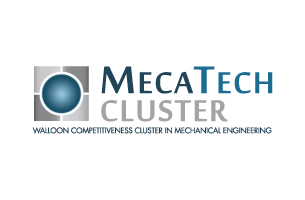Have any questions?
+44 1234 567 890

Pôle MecaTech
The MecaTech Competitiveness Cluster’s mission is to enhance Wallonia’s entire mechanical engineering sector*, boosting activity and employment, through engineering and conducting innovative projects of international scope based on networks of large companies, SMEs, universities, research and training centres.
MecaTech develops innovative products, equipments and industrial processes with high added value focusing mainly, (but not exclusively) on four strategic technological fields, namely:
- Materials and surfaces treatment,
- Materials forming & shapping (including “additive manufacturing”),
- Mechatronics, (micro-) electronics, micro-technologies
- Industry 4.0, especially smart manufacturing and maintenance
These developments address diversified application domains such as Medical Devices, Pharma, Defense Industry, Construction, Transports, Environment & Energy, Industry, Recycling…,
The spectrum of activities is intentionally broad in order to stimulate hybridation of technology, unprecedented creativity, synergy, and innovation.
Since its creation in 2006, MecaTech has generated the following outcomes:
- 69 research projects
- 14 investment projects
- 19 training projects
- + 3 innovation platforms: Proton therapy, Reverse metallurgy and Symbiose (Materials/Biomemimicry)
These 102 projects involving 272 members (169 companies) have generated 285 MM€ in investment.
One of the cluster’s strategic focuses is digitalization & automation, particularly their implementation in the industry. This transversal focus relates directly to the concepts of Smart Industry and IoT technologies.
* Mechanical engineering can develop “functional systems” (machines, industrial equipment, and consumer products) as well as industrial processes and related services. It covers many fields of application (construction, energy, vehicles, machines and equipment, etc.) and relies on a highly diversified base of scientific and technological knowledge and know-how (materials, nanotechnologies, shaping technologies, simulation tools, mechatronics, opto-electronics, inclusion of organic materials, biomimicry, etc.). Those technologies and scientific fields are more and more interlinked. That hybridization of technologies allows very promising breakthrough innovations. Consequently, no single enterprise can master all the know-how and technologies required to generate such innovations. Networking thus is not a fashion, but an absolute necessity.